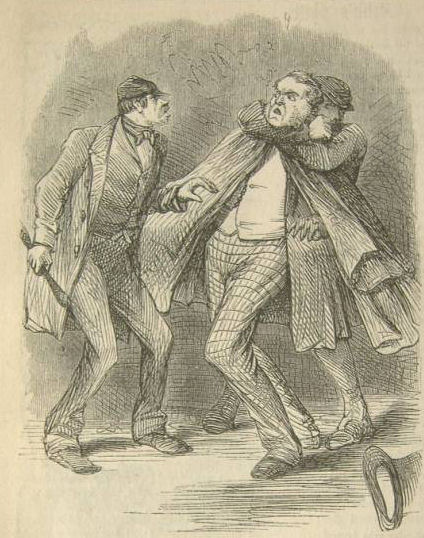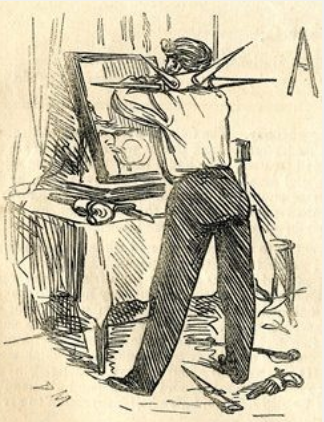
Although crime in England’s capital was on the decline in the mid-19th century, thanks in part to the relatively recent formation of the London Metropolitan Police Force in 1839, fear of crime was a persistent, reoccurring issue thanks to a few instances of robbery and murder, and, of course, the news media.
In particular, the so-called “garrotting” cases, where someone strangles someone else, often using their arm or a length of wire, cord, or cloth, seemed to touch the rawest nerve with the people of London, with the fear of garrotting reaching a fever-pitch in the 1860s.Exactly when enterprising ruffians first realised that they could increase their odds of successfully robbing a person dramatically by placing that person in a chokehold first isn’t clear, since many crimes back in those days often went unreported due to a general mistrust of the police amongst poorer folk. However, historic letters written by purported survivors of garrotting sent to various London newspapers date back to at least 1850. A popular theory is that the practise was first thought up by criminals on convict ships, where guards would often use roughly applied chokeholds to quickly knock out an aggressive criminal, hopefully without causing any long lasting injuries. It’s believed that this coldly efficient method of putting someone down was picked up by criminals who inevitably began using it in their day-to-day criminal dealings.
The weird thing about garrotting and how widely it was reported at the time is that it doesn’t actually appear to have been all that common; even during the supposed height of the “garrotting panic of 1862”.
So why the panic? As it turns out, although garrotting itself was never a major problem in London, newspapers from the era positively loved reporting on it. This led to the few isolated cases that did happen being blown way out of proportion and reported on to such an extent that the people of London were led to believe the streets were filled to the brim with roving rabbles of ruffians armed with lengths of wire.Newspapers’ coverage of garrotting exploded in 1862 when an MP called Hugh Pilkington was strangled and robbed of his watch on his way home from the House of Commons. Pilkington survived, but news of the incident was widely reported on to such an extent that Parliament pushed through the Security from Violence Act in 1863. Under the terms of this new act of Parliament, criminals convicted of any violent theft could be punished with “up to 50 lashes” along with a hefty prison sentence.
Following the attack, the police similarly became noticeably more heavy-handed, presumably in an attempt to reassure the public that they were “doing something” about the problem. London’s streets were flooded with plain clothes police officers; minor crimes, like pickpocketing, that had previously been punished with a small fine, suddenly became issues for the courts.

In an effort to prove that they were stomping down on garrotting in particular, the police also began classifying regular robberies and even drunken…
The post The London Garrotting Panic of the Mid-19th Century appeared first on FeedBox.